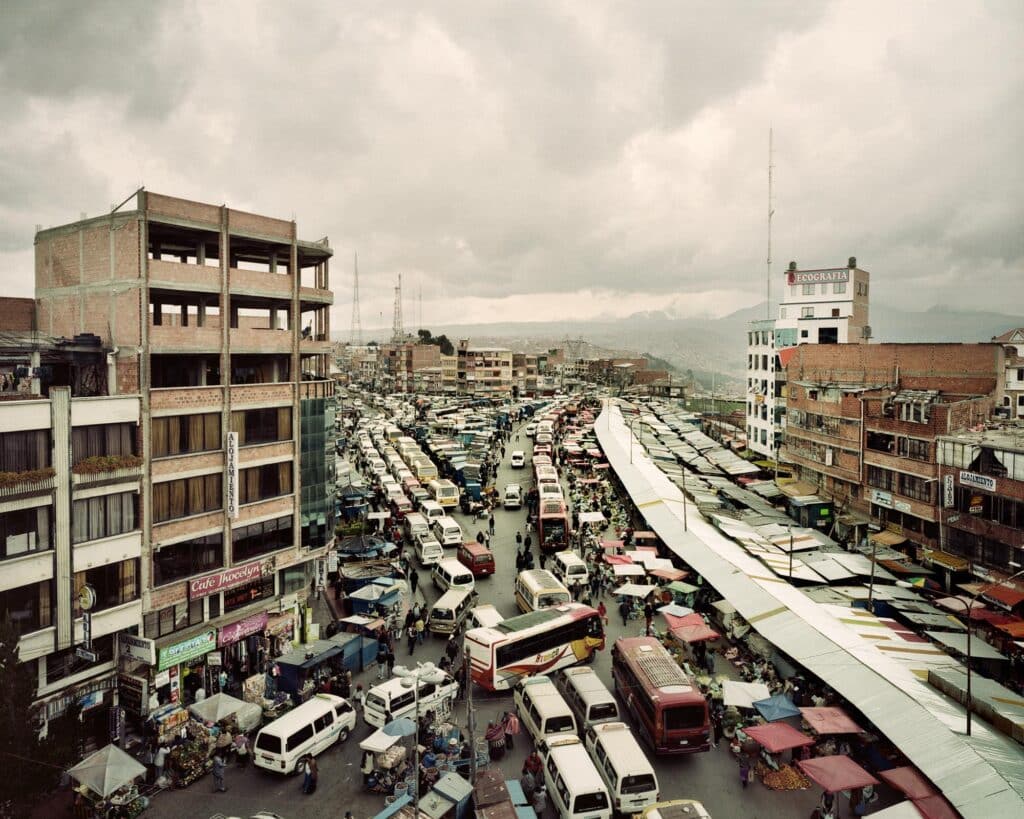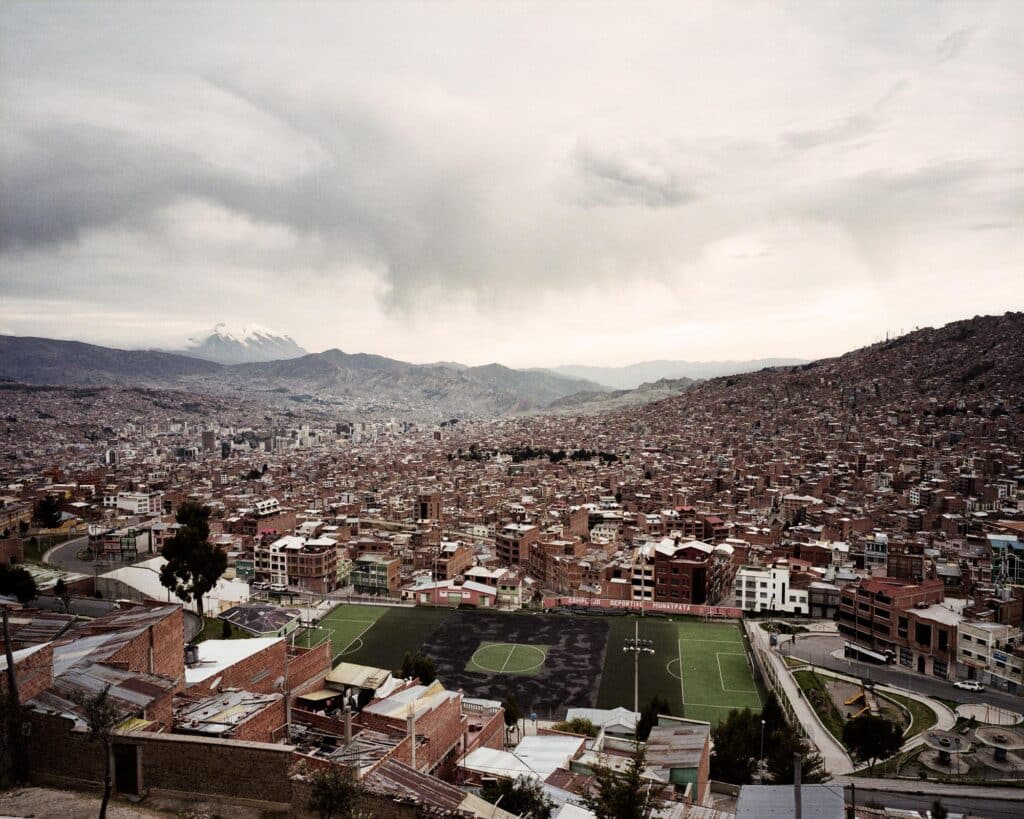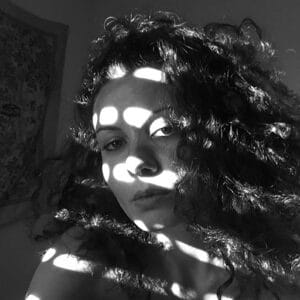Your landscapes in this series are at the edge between the rural and urban worlds. Can you explain how you got started on this idea?
The interest in the boundary between the natural world and anthropic aggression was born when I was young. As a teenager I used to play a lot with video games like SimCity, then I studied environmental urbanism in college, analyzing the city as an organism and addressing the issues that can arise depending on how it’s planned.
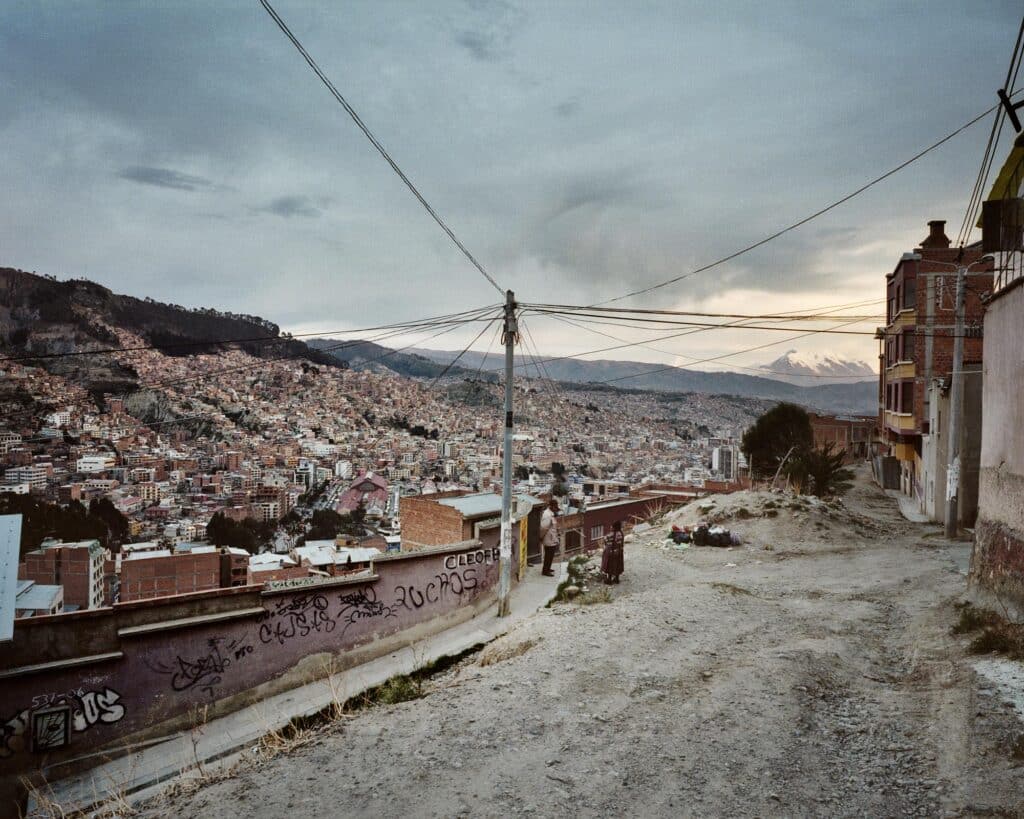
What did you learn from SimCity?
I mostly understood the importance of a balanced distribution of services in urban development. All services, like the police, firefighters or trash collection, have an area of influence. The issues start coming up if the area is populated by a higher number of people than the one the services are planned for, or if the urban area starts expanding informally outside of the territory where these services are guaranteed.
The chapters you created for this project are in Mexico City, La Paz and you’re currently in Bogota. Why Central and South America?
The area is seeing a strong phenomenon of urbanisation, with some delay in relation to Europe or Asia for instance, and I look for scenes of recent urban expansion. In Bolivia agriculture has always been prominent, but now a combination of climate change and the focus on exportation of agricultural products caused small farmers profits to shrink even more, and they flow into cities looking for other kinds of jobs, often creating informal settlements.
What are the direct challenges this phenomenon causes in people’s lives?
Geological and hydrogeological problems are common. One of these photos from La Paz shows a green hill rising on the right side of the frame. Until a few months before the moment when I took the photo it was full of houses, which collapsed because of an intense rainy season. Houses weren’t meant to be built that way on steep terrain, and you can still see on the right a building that is now tilted because it sank into the ground.
Then there’s the class and racial discrimination linked to living in these new areas. People feel different because they know that they’re served in a different way by the government, they don’t have right to certain services.
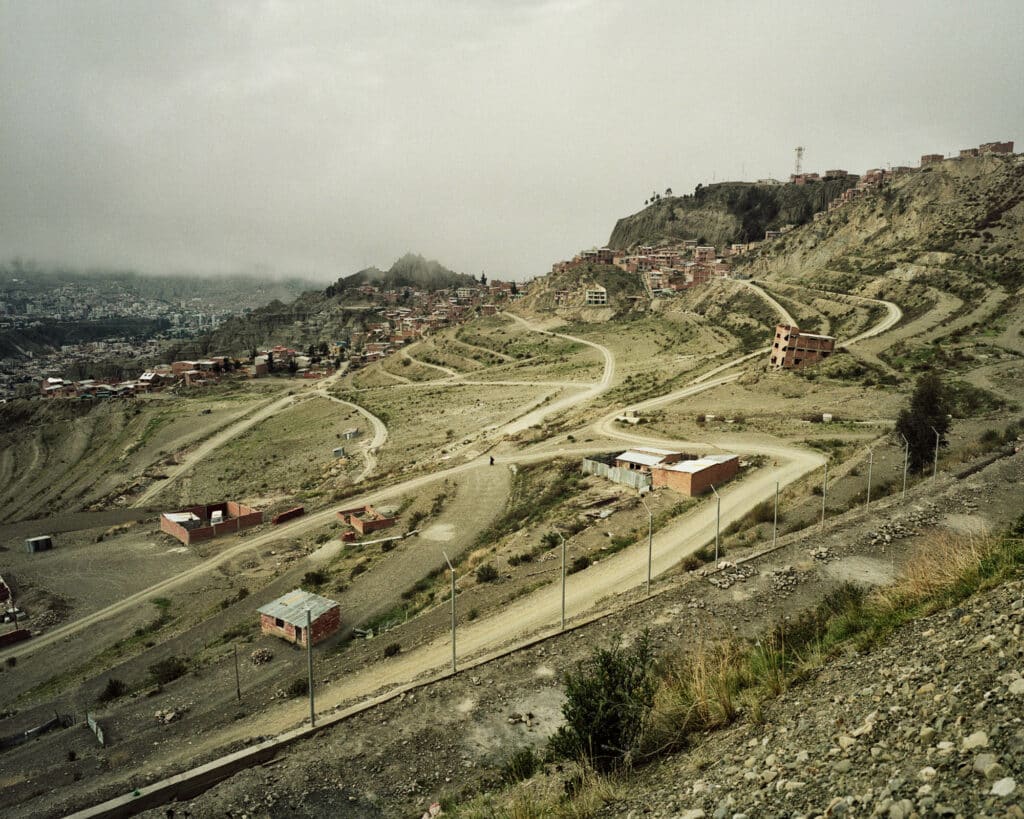
We barely ever see people in this series. It looks like a deliberate choice. Why?
I wanted the focus to be on the architecture and the natural world, and I knew that the human presence would have distracted the viewer, so I kept it to a minimum, waiting for the landscape to be almost empty before I shot.
What made you decide to mint a series of NFTs with photos of this project?
I’m convinced that not that far into the future there will be a radical expansion of virtual spaces, as it has been in the past with the internet, the email or social networks. At the beginning, while saying we didn’t feel the need to use them, we were already 100% in.
The NFT market is relatively new and we’re seeing a lot of new services for artists and investors to be able to use digital art collections. I’d like to provide a virtual space where I can showcase my work and, at the same time, inform people about the issue of urbanisation through maps and written academic essays. I’m working on the content with researchers from the University of Sheffield, and using Oncyber to design the space. If I organise an exhibition in a “real” gallery, I’ll also have this virtual space where the public can converge if they want to know more, or buy the photos as NFTs.
You’ve always worked as a professional printer alongside your production as a photographer. How do you see these two worlds coming together?
I see an NFT as a limited edition piece existing alongside physical pieces of the same image, which can have their own edition.
Buyers in the art and NFT worlds are also very different. In the art world they’re usually collectionists who might love your art piece, put it on a wall, know how to situate it in the field of contemporary photography, while buyers of NFTs are investors who normally don’t know much about art at all but follow market trends, and they buy to be able to resell.
Do you think curation is needed in the NFT world?
On one end the beauty of it is the ability to avoid gatekeepers, on the other sometimes I feel there’s the need of a curation, otherwise the NFTs that sell are always the ones that go viral for the most banal reasons, and they’re not that interesting photographically or culturally speaking. There are curatorial platforms that have started doing good work, and they’re able to direct the interest of new investors who are just starting to learn about the photography field. I minted my NFTs with Foundation for instance, and others are Assembly, Obscura, Quantum.
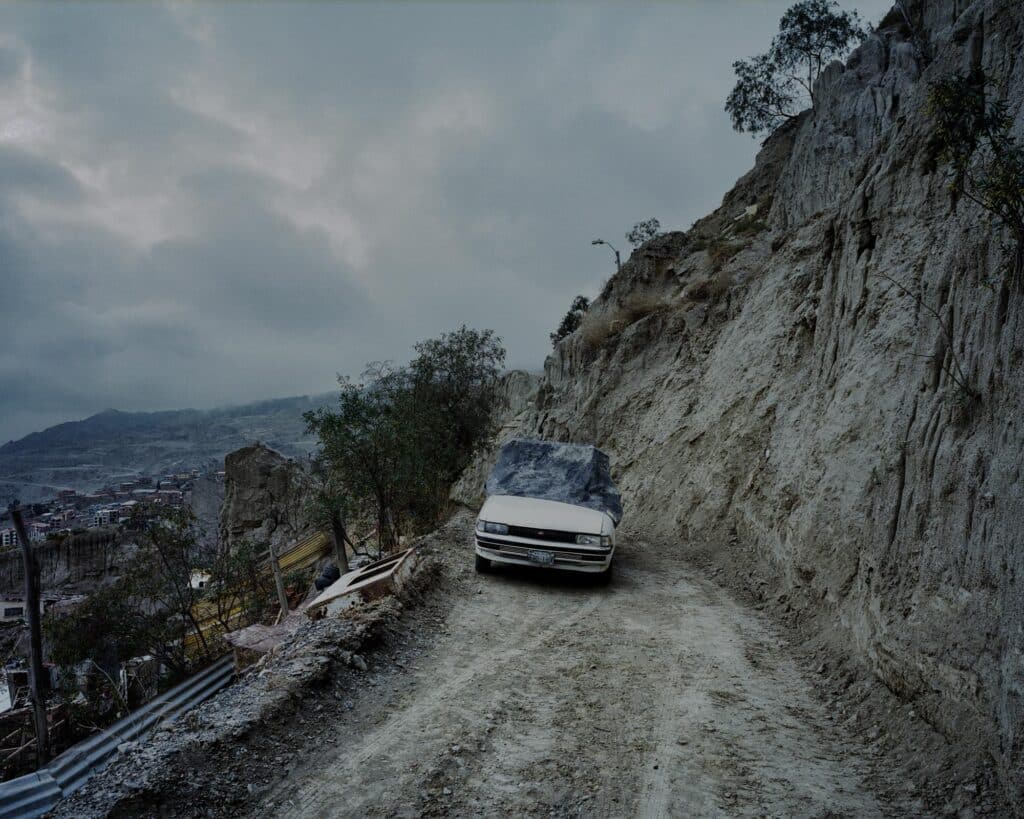
What is the benefit of creating NFT collections as opposed to minting single NFTs?
It’s good to create a series because if a certain body of work starts getting attention there’s the possibility to make more sales, but also because there’s the chance to attract a community around the project.
DAOs for instance, or Decentralized Autonomous Organizations, are communities with a flat hierarchy whose members, often scattered around the world, purchase tokens that enable them to vote on how the pool of money is managed. As a member of a DAO you can make decisions with others on how to further develop a project, involve other partners or spend the profits in further investments.
What is your advice to photographers who want to start on the NFT market?
I feel that in some way digital photography was really born only with NFTs, because up to this point we spent decades producing images in a digital environment that we were not able to control. With NFTs the photographer has royalties in perpetuity and gets a cut on every single resale, and it has never been the case before. As a buyer one can trust the piece’s uniqueness and be sure of the creator’s identity, which was also harder to prove up to this point. I think there’s a lot of opportunity for photographers, but before jumping into this new world I think it’s important to study it and understand in detail how it works. Only this way we’ll be able to get the most out of this new technology.
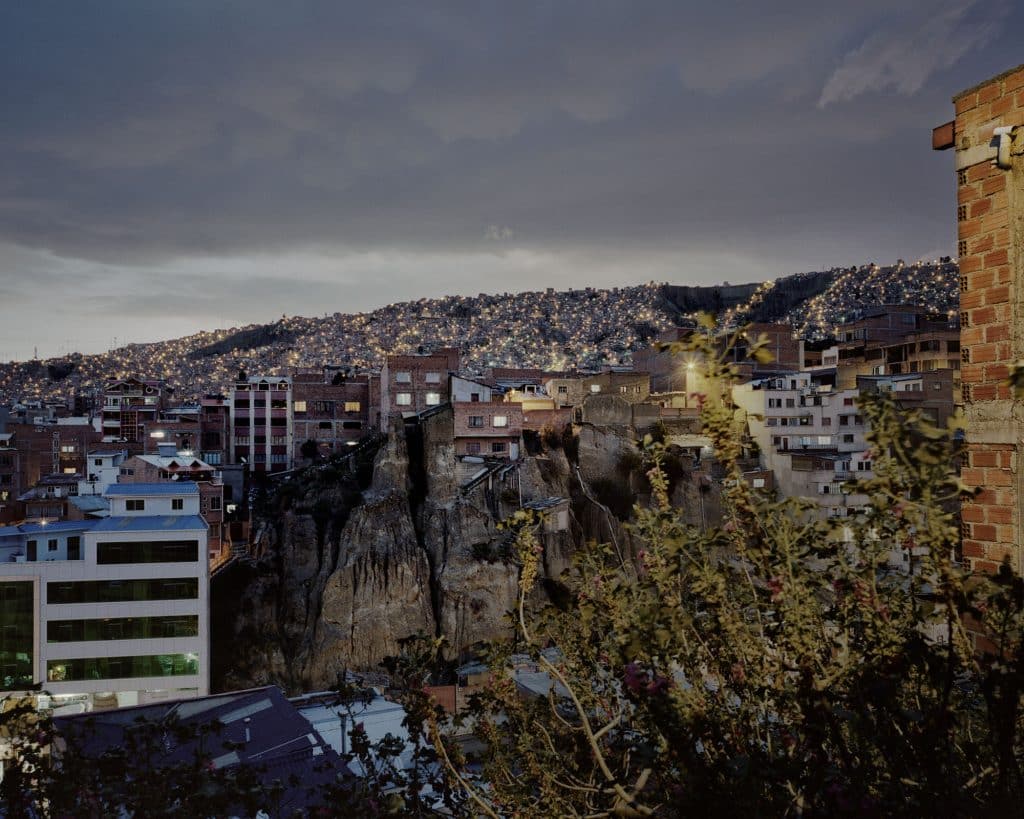
The NFTs from Valentino Bellini’s series La mancha Urbana are available for sale on Foundation.

